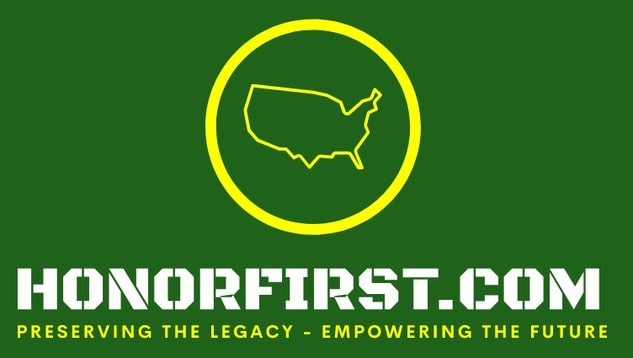December 25 - December 31Good morning! Welcome to another This Week in USBP History! The last week of 2022 has arrived! Today is Christmas and the New Year is almost here. What a year of growth and improvement! I first sent the newsletter under this format to 117 people on April 3, 2022. Since then, that list has grown to 249 people! Every week, I strive to improve the newsletters by including new information and more hyperlinks. Although, many may be able to read through a newsletter in 10 minutes or so, the hyperlinks lead to volumes of additional information! Speaking of "volumes", some may have noticed that this is the first week that I've included a volume number on the newsletter. This newsletter is Vol. 69. Counting the emails that began in September 2021, this is the 69th This Week in USBP History that I've sent without missing a single week. As a reminder, all of the newsletters are archived in the form of a blog on HonorFirst.com here (<- that is a hyperlink to click). Speaking of HonorFirst.com, Ray and I have been making improvements to the site. We have changed its appearance (really, I messed up the site's original theme and I'm trying to package the fix as a success). We also did a bit of restructuring to better present information to USBP applicants, and current and former agents, as well as those who are interested in the Border Patrol. It's our goal to constantly improve HonorFirst, so that the site and newsletters of tomorrow are better than ones of yesterday. This week we remember three Newton-Azrak Award recipients on the anniversaries of their actions. We also remember three of our fallen on the anniversaries of their deaths. Have a Merry Christmas, a Happy New Year, and a great holiday season! Until next year, have a great week! Cliff PS -
Esprit de Corps The workplace climate resulting from a combination of organizational pride and employee morale.
Esprit de corps is reinforced through the shared goals, mission and values of the organization and its employees. The definition turns Esprit de Corps into a simple formula and defines parts that comprise organizational pride and employee morale. Esprit de Corps = Organizational Pride + Employee Morale Esprit de Corps is the key to a healthy organization and engaged employees. Honor First is foundational to the Border Patrol's organizational pride and integral to its Esprit de Corps. Documents/Events 1910
1933
Newton-Azrak Award Action Anniversaries Follow this link to see examples of USBP employees Upholding Honor First.
1999 Mark M. Jones Border Patrol Agent McAllen Sector Sevin K. Neufner Border Patrol Agent McAllen Sector On December 30, 1998, Border Patrol Agents Mark M. Jones and Sevin Neufner were assigned boat patrol duties in the McAllen area of responsibility. While patrolling and area known for alien and narcotic smuggling activities, Agent Neufner, using night vision equipment, observed what appeared to be an individual in distress in the middle of the river. He informed his partner, Agent Jones, who was operating the boat and directed him to the person, who was struggling to stay afloat. While attempting to close the distance between the boat and the person, Agent Neufner observed him slip beneath the surface for several seconds and then reappear still struggling to stay afloat. Upon reaching this person, Agent Neufner observed him go underwater for a second time and acting instinctively, jumped into the river and grasped him by his shoulders, rotating his body to a position where his face was out of the water. Agent Jones assisted his partner by throwing in a line and pulling Agent Neufner and the person into the boat. Once safe inside the boat, the person began coughing out water he had swallowed and regained consciousness. 2021 Michael G. Linder - photo Border Patrol Agent New Orleans, LA On December 31, 2020, while off duty, Agent Linder witnessed a vehicle skid to a stop after impacting a highway center-divider at high speed. Agent Linder immediately stopped and ran to the scene to render aid. Upon arrival at the vehicle, Agent Linder found it teetering precariously on the divider, still running, and with the engine compartment smoldering. Without regard for his own safety, Agent Linder took charge of the scene, supervising rescue effort and personally extracting the single male occupant from the burning vehicle. Agent Linder directed efforts to call 911 and extinguish the fire. Agent Linder's quick, decisive, and selfless actions ensured that the driver lived to fully recover from this harrowing event. Agent Linder's actions reflect great credit upon himself, New Orleans Sector, and the United States Border Patrol. 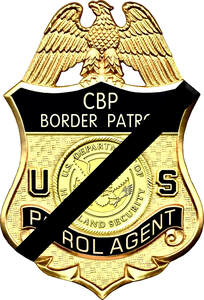 U.s. Border Patrol Badge with a Mourning Band U.s. Border Patrol Badge with a Mourning Band USBP Fallen As of December 7, 2022, the U.S. Border Patrol has suffered 153* fallen. Titles:
The names that appear below hold a place of honor. They have made the ultimate sacrifice in an effort to fulfill the oath each officer took to protect and defend the United States of America. The facts regarding each officer are presented without major editing of the "language of the day" found in the reports detailing the circumstances of each event. This is done to provide the reader an association with historical timeframes. Employees who died in the line of duty due to being exposed to deadly illnesses will not have the cause of death listed. I will note that Border Patrol Agent John Charles Gigax is not recognized as officially fallen by Customs and Border Protection or the U.S. Border Patrol. The Border Patrol Foundation and the Border Patrol Museum also fail to recognize him. He is remembered by all except organizations containing "Border Patrol" in their title. He is remembered by the:
The U.S. Border Patrol, the Border Patrol Foundation, and the Border Patrol Museum should fix their oversight. HonorFirst.com remembers and lists Agent Gigax among the fallen. 1928
Robert H. Lobdell Date of Birth: May 15, 1898 Entered on Duty: June 16, 1928 Title: Patrol Inspector End of Watch: December 25, 1928 Details: Patrol Inspector Lobdell was shot and killed instantly on the night of December 25, 1928, near Roseau, Minnesota, by an individual who was suspected of being an alien entering the United States illegally. Inspector Lobdell was shot while he was attempting to get the individual into the patrol car for transportation to Warroad, Minnesota. The murderer was apprehended the following day, but he denied his guilt and steadfastly refused to make any statement that would reveal his past history. He was later convicted and sentenced to life imprisonment in the state penitentiary at Stillwater, Minnesota. Reportedly, he subsequently corresponded with the judge of the court in which he was tried, confessing that he had killed Patrol Inspector Lobdell. Survivor benefits - As per this document, his wife received $52.50 per month. Gravesite 1933 Bert G. Walthall Date of Birth: February 27, 1900 Entered on Duty: July 31, 1931 Title: Patrol Inspector End of Watch: December 27, 1933 Historical documents of the shooting - 1, 2, 3, 4, 5, 6, 7, 8 Details: On the evening of December 27, 1933, Patrol Inspectors Bert G. Walthall, Louis A. Smith, and Curtis D. Mosely were patrolling the international boundary near Cordova Island at El Paso, Texas. Cordova Island is not in fact an island, but Mexican territory left on the north side of the Rio Grande River when the river changed its course. The boundary here was an imaginary line and a person could step across from one country to another. At about 8:45 p.m., the officers noticed two men cross the line with sacks on their backs and depart in a waiting automobile. The officers attempted to stop the car by blowing their horn but the smugglers only increased their speed. After a chase of a couple of blocks, the patrol car overtook the smugglers, who pulled over to the side of the road. Before the patrol car could be stopped, it had arrived alongside the smugglers' car, about ten feet to the left of it. Inspector Mosely was driving, Inspector Walthall was sitting beside him, and Inspector Smith was in the back seat. When the patrol car stopped, Officers Walthall and Smith alighted from the right side. They were met by a blast of rifle fire from the smugglers that instantly killed Inspector Walthall and wounded Inspector Smith. Inspector Mosely had gotten out of the car on the left side and opened fire on the smugglers, whose car was then in motion. Inspector Mosely continued shooting with his rifle and pistol until his weapons were empty and then turned his attention to his fellow officers. Survivor benefits - As per this document, his wife received $67.50 per month for her and their child. Gravesite 1940 George E. Pringle Date of Birth: August 24, 1896 Entered on Duty: June 5, 1936 Title: Patrol Inspector End of Watch: December 28, 1940 Details: During the evening of December 25, 1940, Patrol Inspector George E. Pringle was working alone near Parker, Arizona. He was engaged in conversation with a Special Agent for the Metropolitan Water District of Southern California, when he indicated he was going to follow a car that had just passed. The vehicle was known to both men as belonging to a group of aliens suspected of illegal activities in connection with the Parker Dam. Inspector Pringle was next observed driving south on Parker Road. Two witnesses indicated the government vehicle being driven by Inspector Pringle veered toward the center of the road and swerved to the right off the roadway overturning several times. Inspector Pringle sustained multiple injuries including contusions of the upper frontal region of the skull and a fracture at the base of the skull. He died of injuries received in the accident on December 28, 1940. Subsequent investigation revealed that the accident occurred as a result of a blow out of the right front tire that was caused by the tire passing over a broken bottle in the roadway. Gravesite
Comments
December 18 - December 24Good morning! Welcome to another This Week in USBP History! Each week I try to share a story or an idea in this intro section that I hope will lead to changes beneficial to the workforce. This week is no different. But, for those beneficial changes to occur, individuals (usually current USBP leadership) must have the strength to be self-critical. All of us have heard many different definitions of leadership and management. When I think of the concepts, I try to look at them through the lens of the USBP and its workforce. Here's my take, and it's neither absolute or all-encompassing:
Notice what I did there? Running operations is absolutely not synonymous with being a leader! Maybe that's Border Patrol blasphemy... Nevertheless, if a person in a position of authority has a bias toward the mission (over the workforce), then they have a higher propensity of being a good manager of the mission. Remember, that person is measured by those in their charge, not by what they say, but by what they do! Actions and inactions speak louder than words. I've said it before, there is a reason that CBP and the USBP constantly do horribly on the annual Federal Employee Viewpoint Surveys (FEVS). This year is no different. Less than 16% of the USBP workforce responded to this year's FEVS invitation, very clearly indicating a lack of confidence that their participation will make any difference, and recent history shows that they are correct. It is easy to blame poor FEVS scores on one Presidential Administration or other, but know this, the USBP's FEVS scores have ranked in the bottom 10% of the entire federal government for over a decade. So, I'll say this... It's past time for those in positions of authority in CBP and the USBP to have a bias toward their workforce. I believe that slogans such as Mission First, People Always, are horrible because they promote a bias toward managing the mission, usually at the expense of the workforce. Thus, creating not leaders of people but managers of mission. Remember, as Simon Sinek said, "It's not about being in charge, it's about taking care of those in your charge!" In other words, take care of the workforce and let them take care of the mission! To alleviate any doubts, if you wear one of the insignia below in dress uniform or are a professional staff equivalent, I'm speaking to you! This week starts with a 1908 memo by which Mounted Inspector Jeff Milton requests and extension of his leave. We have another El Paso Sub-district gunfight in 1928. And we finish the Documents/Events Section with three references from Joe Banco's books. There are no known Newton-Azrak Award action anniversaries this week. As is the cousin in the newsletter, I will highlight a recipient of which we do not know their action's anniversary. This week's highlight is LeAlan L. Pinkerton. He is a recipient from 1998. I have no additional information. However, I was able to contact LeAlan last week and I hope to be able to update the Newton-Azrak Award page with his information and maybe a few photos. Until then, enjoy the photo to the right. LeAlan and I were in the 2008 Chicago St. Patrick's Day Parade. He let me get on his horse Bullet. Much to the discomfort of all who witnessed me mounting and dismounting (not to mention Bullet), I was wearing a kilt. We also remember three of our fallen on the anniversaries of their deaths. Have a great week! Cliff PS -
Esprit de Corps The workplace climate resulting from a combination of organizational pride and employee morale.
Esprit de corps is reinforced through the shared goals, mission and values of the organization and its employees. The definition turns Esprit de Corps into a simple formula and defines parts that comprise organizational pride and employee morale. Esprit de Corps = Organizational Pride + Employee Morale Esprit de Corps is the key to a healthy organization and engaged employees. Honor First is foundational to the Border Patrol's organizational pride and integral to its Esprit de Corps. Documents/Events 1908
Newton-Azrak Award Action Anniversaries Follow this link to see examples of USBP employees Upholding Honor First.
There are no known Newton-Azrak Award action anniversaries this week. However, I will highlight 1998 recipient: LeAlan L. Pinkerton Nothing is known about the action that led to his selection to receive the award. Recently, I was able to locate and speak with LeAlan. It's my hope that I will be able to share new information with you soon and use it to update the Newton-Azrak Award page. 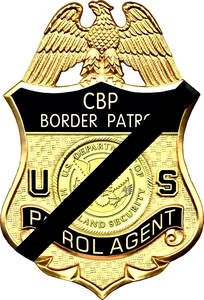 U.S. Border Patrol Badge with Mourning Band U.S. Border Patrol Badge with Mourning Band USBP Fallen As of December 7, 2022, the U.S. Border Patrol has suffered 153* fallen. Titles:
The names that appear below hold a place of honor. They have made the ultimate sacrifice in an effort to fulfill the oath each officer took to protect and defend the United States of America. The facts regarding each officer are presented without major editing of the "language of the day" found in the reports detailing the circumstances of each event. This is done to provide the reader an association with historical timeframes. Employees who died in the line of duty due to being exposed to deadly illnesses will not have the cause of death listed. I will note that Border Patrol Agent John Charles Gigax is not recognized as officially fallen by Customs and Border Protection or the U.S. Border Patrol. The Border Patrol Foundation and the Border Patrol Museum also fail to recognize him. He is remembered by all except organizations containing "Border Patrol" in their title. He is remembered by the:
The U.S. Border Patrol, the Border Patrol Foundation, and the Border Patrol Museum should fix their oversight. HonorFirst.com remembers and lists Agent Gigax among the fallen. 1950
Richard D. Clarke Date of Birth: December 6, 1926 Entered on Duty: February 23, 1949 Title: Patrol Inspector End of Watch: December 18, 1950 Details: At about 1:00 p.m. on December 18, 1950, Patrol Inspector Richard D. Clarke and his teammate, Patrol Inspector Ralph L. Trantor, took Eulalio Cordero, an illegal alien, into custody in south El Paso. They were bringing him to headquarters by automobile for further questioning when the alien suddenly stabbed Inspector Clarke in the heart. His death was instantaneous. The alien then seized Inspector Trantor's gun. Patrol Inspector Trantor slammed on the car's brakes, held on to the gun and threw himself into the back seat where he grappled with the alien and succeeded in holding him until police officers arrived. During the struggle, Trantor's gun was discharged once, the bullet passing through a car seat. Inspector Trantor was badly bitten on the face and arms. The incident began as a routine immigration procedure. Inspector Clarke questioned Cordero on a street in El Paso, Texas. First claiming to be a citizen of the United States, he later admitted he was an illegal alien. Cordero was charged with murder. Gravesite 2004 George R. DeBates Date of Birth: November 19, 1972 Entered on Duty: April 25, 1999 Title: Border Patrol Agent End of Watch: December 19, 2004 Details: On December 19, 2004, Agent George R. DeBates was involved in a single-vehicle accident while on patrol near Pisinimo, Arizona. He died as a result of his injuries. Agent DeBates was working on a camp detail while assigned to the Casa Grande Station. Agent DeBates is the fourth Department of Homeland Security employee to die in the line of duty since the Department was created in March 2003. Originally, from Wisconsin, Agent DeBates was a graduate of the 403rd session of the Border Patrol Academy. A four-year veteran of the Border Patrol, Agent DeBates was assigned to the Casa Grande Station, on detail to the Ajo Station. Gravesite 2019 Luis O. Peña Jr. Date of Birth: July 16, 1977 Entered on Duty: January 27, 2003 Title: Border Patrol Agent End of Watch: December 23, 2019 Details: On December 23, 2019, Border Patrol Agent Luis O. Peña Jr. succumbed to complications related to significant injuries he received from a vehicle accident (roll over) on the Tohono O’odham Nation on October 18, 2007. BPA Peña was medically retired on October 8, 2010. Agent Peña entered on duty with the United States Border Patrol on January 27, 2003, as a member of the 538th session of the Border Patrol Academy. He was assigned to the Casa Grande Border Patrol Station in the Tucson Sector following his graduation. Agent Peña served with the United States Border Patrol for over seven years. December 11 - December 17Good morning! Welcome to another This Week in USBP History! My father is a subscriber to this newsletter and last week he shared with me that the Border Patrol should hire me to do this HonorFirst.com stuff as a contractor. That gave me quite a chuckle. I told him that the Patrol had me on their payroll less than two years ago but that my chain-of-command stifled me to the point I had to retire. Plus, now they're getting all of this for free, but with the risk of me being unrestrained. As a quick sidenote, in my last three years in the Patrol, I was performing a job that I absolutely loved, Awards and History. I retired because of my chain-of-command, in perfect example of, "people don't quit jobs, people quit people." My retirement was a retention failure and could be a leadership case study of what not to do. Getting back on track... I try to use my powers for good, just like I always have. That is to say to the benefit of the workforce. I avoid the turbulence of politics, and of voicing any opinions I may have on strategic and tactical approaches to patrolling the border. I like to stay in the realm of my passion, organizational pride and employee morale. Highlighting the good, shining the light on areas of improvement, and attempting to influence beneficial change. As a retiree, I have been known to send emails to Border Patrol leadership of all levels. Sometimes a note of congratulations, and sometimes sharp suggestions to benefit the workforce. Every day, I engage with 100's of current and former employee's in the Agents' Forum. I want to highlight one of my recent posts to the forum concerning someone who left a significant impression, someone I consider to be a great leader, Acting Chief Patrol Agent Jeff Denise:
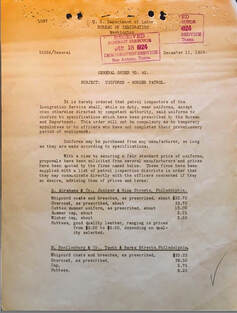 General Order 42 General Order 42 Too often, we only hear of negative leadership stories. Jeff's is a positive one, where a person in a position of authority valued those in his charge in a manner will always impress me. Thank you, Jeff! This week (like last week, ha!), starts of BIG with the Patrol's first uniform policy, General Order 42 from 1924! We have the earliest, most complete roster of Patrol Inspectors of which I am aware from 1929. Surprise, there was a gunfight in El Paso in 1930! The Patrol and Customs didn't really get along in 1944 (who would have guessed we would be one big happy family in beginning in 2003?). We remember two Newton-Azrak Award recipients, both given posthumously, on the anniversary of their actions. Also, we remember five of our fallen on the anniversaries of their deaths. Before I forget, make sure you visit the Border Patrol Stories page. I've received several that are pretty good! If you want to submit a story, please sent to me at [email protected]. Have a great week! Cliff PS -
Esprit de Corps The workplace climate resulting from a combination of organizational pride and employee morale.
Esprit de corps is reinforced through the shared goals, mission and values of the organization and its employees. The definition turns Esprit de Corps into a simple formula and defines parts that comprise organizational pride and employee morale. Esprit de Corps = Organizational Pride + Employee Morale Esprit de Corps is the key to a healthy organization and engaged employees. Honor First is foundational to the Border Patrol's organizational pride and integral to its Esprit de Corps. Documents/Events 1924
Newton-Azrak Award Action Anniversaries Follow this link to see examples of USBP employees Upholding Honor First.
2004 James P. Epling Border Patrol Agent Yuma Sector Posthumously Awarded Border Patrol Agent James P. Epling was honored posthumously for his courage and bravery in rescuing a female alien in distress in the swift cold waters of the Colorado River and attempting to apprehend a group of illegal aliens along the riverbanks. On the evening of December 16, 2003, Agent Epling was assigned to the Yuma Border Patrol Sector in Yuma, Arizona. He was working near Andrade, California, when he was last seen attempting to apprehend a group of illegal aliens along the banks of the Colorado River. Moments prior to his disappearance, Agent Epling entered the swift, cold waters of the Colorado River to rescue a female alien in distress. Once the woman was safe, Agent Epling pursued four other individuals he observed running south toward Mexico along the riverbank in an attempt to escape arrest. This was the last time Agent Epling was seen alive. Agent Epling’s body was recovered from the river after a three-day search. 2011 Brian A. Terry - photo Border Patrol Agent Tucson Sector/BORTAC Posthumously Awarded On December 14, 2010, Border Patrol Agent Brian A. Terry was conducting operations as a member of the Border Patrol Tactical Unit (BORTAC) in the Nogales, Arizona area of operations. Agent Terry’s team encountered five individuals, at least two of whom were armed with rifles, in the “Peck Well” area near Rio Rico, Arizona. During the attempt to arrest these individuals, the agents and suspects fired shots. Agent Terry was mortally wounded during the exchange of gunfire and succumbed to his injuries on December 15, 2010. 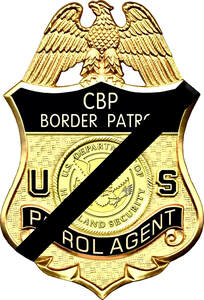 U.S. Border Patrol Badge with Mourning Band U.S. Border Patrol Badge with Mourning Band USBP Fallen As of December 7, 2022, the U.S. Border Patrol has suffered 153* fallen. Titles:
The names that appear below hold a place of honor. They have made the ultimate sacrifice in an effort to fulfill the oath each officer took to protect and defend the United States of America. The facts regarding each officer are presented without major editing of the "language of the day" found in the reports detailing the circumstances of each event. This is done to provide the reader an association with historical timeframes. Employees who died in the line of duty due to being exposed to deadly illnesses will not have the cause of death listed. I will note that Border Patrol Agent John Charles Gigax is not recognized as officially fallen by Customs and Border Protection or the U.S. Border Patrol. The Border Patrol Foundation and the Border Patrol Museum also fail to recognize him. He is remembered by all except organizations containing "Border Patrol" in their title. He is remembered by the:
The U.S. Border Patrol, the Border Patrol Foundation, and the Border Patrol Museum should fix their oversight. HonorFirst.com remembers and lists Agent Gigax among the fallen. 1924
Frank H. Clark Date of Birth: January 4, 1879 Entered on Duty: August 5, 1924 Title: Patrol Inspector End of Watch: December 13, 1924 Details: While patrolling in company with another officer near Cordova Island, El Paso, Texas, on the evening of December 13, 1924, Patrol Inspector Clark was shot and killed by smuggler's spotters. They had concealed themselves at a strategic point on the American side of the international boundary line for the purpose of warning and protecting the smugglers should the presence of officers be detected. When the smugglers were challenged by the Patrol Inspectors, the spotters opened fire from ambush, and one of the shots hit Patrol Inspector Clark. His death was instantaneous. Other officers quickly took positions in concealment surrounding the scene of the action and remained there through the night. They found sacks containing illegal liquor, and they took into custody a Mexican family found on the scene searching the premises in the early morning. One of these Mexicans, Eulalio Aguilar, was subsequently indicted on charge of murder, convicted and given a 10-year sentence. Survivor benefits - As per this document, Wife received $65 per month until their two children turned 18, then $49 per month. Gravesite 1927 Franklin P. Wood Date of Birth: September 22, 1894 Entered on Duty: March 11, 1926 Title: Patrol Inspector End of Watch: December 15, 1927 Details: Patrol Inspector Franklin P. Wood stationed at Sibley, Michigan, disappeared in the early morning of December 15, 1927. On the Detroit River near Wyandotte, Michigan, under cover of darkness, Patrol Inspectors Wood, James W. Oliver, and Chief Patrol Inspector Ivan A. Hall patrolled in search of smugglers expected in the area. Two boats containing contraband liquor had been seized and were being guarded when Inspector Wood left to pursue another boat operating in the vicinity of Wyandotte. He left in pursuit of one boat loaded with aliens, while his fellow officers pursued another. His wrecked boat, rammed by the smugglers, was found on the river sometime after Patrol Inspector Wood was last seen. Patrol Inspector Wood either drowned or was killed by the smugglers and thrown into the river. His body was never found. Survivor benefits - As per this document, his mother received $22.50 per month until her death in 1931. Body not recovered. 1996 Michael W. Barnes Date of Birth: April 7, 1951 Entered on Duty: March 14, 1976 Title: Patrol Agent in Charge End of Watch: December 12, 1996 Details: On December 12, 1996, about 4:00 p.m., Border Patrol Agents were working on a trail on the Chittum Ranch in Carrizo Springs, Texas, assisted by a Del Rio Sector pilot. They spotted a group of about 13 illegal aliens, who ran when the agents approached them. Agents Barnes apprehended five of the aliens and turned them over to Agent Tapia. He began trying to apprehend the remainder of the group. The pilot spotted the group running along a creek bottom and was guiding agents toward the area. Agent Barnes was within about 50 yards of them when the pilot stated over the radio that Agent Barnes had gone down. He radioed Agent Barnes, but there was no response. When he notified the other agents in the area of the situation, they started making their way to assist him. About 4:32 p.m., Agent Tapia found Agent Barnes face down. Agents determined that he was not breathing and had no pulse. They immediately started performing CPR. Pilot Snyder radioed for an ambulance and a helicopter. Agent Barnes was placed in an INS Bronco and transported to the ambulance. About 5:38 p.m., a helicopter took off with Agents Barnes and Guzman for a hospital in San Antonio, arriving at 6:13 p.m. At 6:25 p.m., a doctor advised Agent Barnes had died. The medical examiner’s office determined he had suffered a massive heart attack. Agent Barnes was born in San Antonio and grew up in Pearsall, Texas. He served as a Supervisor, Assistant Patrol Agent in Charge and Patrol Agent in Charge at the Carrizo Springs Station. Gravesite 2003 James P. Epling Date of Birth: March 9, 1979 Entered on Duty: January 13, 2003 Title: Border Patrol Agent End of Watch: December 16, 2003 Details: On December 16, 2003, at approximately 7:00 p.m., Border Patrol Agent James P. Epling was reported missing after responding to sensor activity along the Colorado River near Andrade, California. Agent Epling had apprehended two Chinese illegal immigrants and had rescued another from drowning in the Colorado River. He was attempting to apprehend other illegal immigrants along the river when he suddenly disappeared. A massive rescue operation by Border Patrol Search, Trauma, and Rescue teams, as well as multiple local, State, Federal, tribal, and foreign agencies, was immediately initiated. The response and coordinated rescue effort continued for three days. On December 19, 2003, at approximately 7:15 p.m., with the aid of an underwater camera, Agent Epling’s body was located 29 feet deep in the Colorado River. He was approximately 200 yards from where it was believed he initially disappeared. The investigation revealed that Agent Epling had died as a result of accidental drowning. Agent Epling was 24 years old and was a graduate of the 537th session of the Border Patrol Academy. On January 28, 2004, his son, James Paul Epling II, was born. Gravesite 2010 Brian A. Terry Date of Birth August 11, 1970 Entered on Duty: July 23, 2007 Title: Border Patrol Agent End of Watch: December 15, 2010 Details: On December 14, 2010, Agent Brian A. Terry was shot while conducting a Border Patrol Tactical Unit (BORTAC) operation in the area of ‘Peck Wells’. This area is near Rio Rico, Arizona and about 15 miles north of Nogales, Arizona. At 11:15pm, Agent Terry and his team spotted a group of individuals approaching their position. An encounter ensued and gunfire was exchanged. Agent Terry succumbed to his injuries on December 15, 2010. Agent Terry was a native of Flat Rock, Michigan. He served our country proudly with the United States Marine Corps and continued his service as a Police Officer with the cities of Ecorse and Lincoln Park prior to joining the United States Border Patrol. Agent Terry was a member of the 699th Session of the Border Patrol Academy assigned to the Naco Border Patrol Station within the Tucson Sector. Agent Terry is survived by his mother, father, stepmother, stepfather, brother and two sisters. The Naco Border Patrol Station was later renamed in his honor. Gravesite December 4 - December 10Good morning! Welcome to another This Week in USBP History! Just this week I shared with fellow Border Patrol Historian, Joe Banco, the feeling of melancholy I sometimes experience as I spend so much time with so many that have been gone for so long. Every week, I reread every document that I reference in the Documents/Events section of the newsletter. Every time that I mention a name of a person who has died, I research and attempt to find their gravestone and give a link in their years of life. Sometimes, it's quite an investment of time to find and confirm their gravesites. I commonly find myself thinking that I'm the only person on the planet that is thinking of that person. Relatedly, I was recently having a conversation with my wife about the recent loss of her mother and the death of my great-grandmother many years ago. We agreed that I was the last generation in my family that would remember my great-grandmother and my wife's children would be the last generation that would remember her mother. After those generations are gone, they'll only be remembered as an image in photographs, or names written in documents or on grave markers. Our conversation led to who might be the last to remember us. Quite a sobering thought of our mortality. Back to USBP history, I tend to concentrate on official documents. That's what is found in National Archives. They comprise the official history of the Patrol. But since I've been authoring these emails, I've received incredible stories from Ron Colburn, Joe Banco, John Burgmeier and others. Stories of big personalities, heroism, tragedies, and humanity. Some have been funny or sad, but all are the building blocks that create the foundation of Patrol's culture. Embarrassingly, I have missed the organizational importance of the stories of the individual as I have presented USBP history. All of us have so many incredible experiences that may never see the light of day. Many of them may involve acts of heroism or the terror of being shot at. Some may be stories of humanity, or the lack thereof. Maybe great law enforcement actions, big personalities or whatever... We've heard of people wanting to collect PA stories to write a book, but it never seems to happen... Well, it turns out that Ray and I have a website. Now, I've tried to highlight the good works of the workforce with the pages of Upholding Honor First. And now I have built another section of the site devoted true PA stories, Border Patrol Stories. There are a few stories there and I hope that you'll email me some more so that they and the individuals that lived them aren't lost in time.  General Order 42 General Order 42 I know that we have to protect the identities of the innocent, so the author can be anonymous and names changed, but I'd like to keep the sectors and years accurate. I see this as a way to preserve soul of the Patrol. If you have something to share, please email me the story at [email protected]. I can even put photos in them. This week starts BIG! The first document is General Order 42 from 1924, the Patrol's first uniform policy! We have three gunfights from the late 1920's from El Paso (they seemed to be the only sub-district reporting shootings). We end in 1998 with the approval of the USBP flag. There are no Newton-Azrak Award action anniversaries for the week, so I'll present you a mystery. Border Patrol Agent Carlos Martinez is listed as having been a recipient from 1993 while he was assigned to San Diego Sector. That is the extent of the information that I have on his action and I have exhausted my sources. I have records that show "Carlos Martinez" being a member of Class 231 in 1988-1989. If any of you have additional information, I'd love to receive it! We also remember two of our fallen on the anniversaries of their deaths. Have a great week! Cliff PS -
Esprit de Corps The workplace climate resulting from a combination of organizational pride and employee morale.
Esprit de corps is reinforced through the shared goals, mission and values of the organization and its employees. The definition turns Esprit de Corps into a simple formula and defines parts that comprise organizational pride and employee morale. Esprit de Corps = Organizational Pride + Employee Morale Esprit de Corps is the key to a healthy organization and engaged employees. Honor First is foundational to the Border Patrol's organizational pride and integral to its Esprit de Corps. Documents/Events 1924
Newton-Azrak Award Action Anniversaries Follow this link to see examples of USBP employees Upholding Honor First.
There are no Newton-Azrak Award action anniversaries for the week. 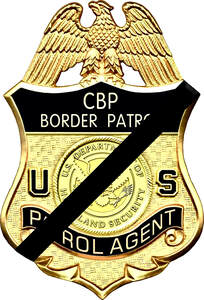 U.S. Border Patrol Badge with Mourning Band U.S. Border Patrol Badge with Mourning Band USBP Fallen As of May 16, 2022, the U.S. Border Patrol has suffered 152* fallen. Titles:
The facts regarding each officer are presented without major editing of the "language of the day" found in the reports detailing the circumstances of each event. This is done to provide the reader an association with historical timeframes. Employees who died in the line of duty due to being exposed to deadly illnesses will not have the cause of death listed. *With the exception of two of the fallen immediately below, all names are listed (or in the process of being included) on the official Honor Roll of U.S. Border Patrol Fallen and inscribed on the National Law Enforcement Officers Memorial. The U.S. Border Patrol should fix these discrepancies. HonorFirst.com honors both of the fallen.
1933
Doyne C. Melton Date of Birth: January 17, 1902 Entered on Duty: October 29, 1927 Title: Patrol Inspector End of Watch: December 7, 1933 Details: Patrol Inspector Doyne C. Melton was shot and killed in a battle with Mexican smugglers at El Paso, on December 7, 1933. Six Patrol Inspectors were moving up in the darkness on seventeen Mexican smugglers who were wading across the river with packs of liquor. One of three smugglers acting as spotters who had preceded the main body of the smugglers over the river, concealed beneath a platform on the American side, opened hostilities by shooting Inspector Melton. The opening shot was fired without warning and before any challenge had been given. Inspector Melton was shot through the heart, dying instantly. The bitterness of the fight was evidenced by the fact that in addition to the slaying of Inspector Melton, four smugglers were killed and another was wounded. Survivor benefits - As per this document, his wife received $54.25 per month. Gravesite 1968 James G. Burns Date of Birth: July 31, 1924 Entered on Duty: June 8, 1955 Title: Senior Patrol Inspector End of Watch: December 8, 1968 Details: Official reports covering the death of Senior Patrol Inspector James G. Burns indicated he was performing line watch operations, looking for evidence of illegal aliens in a river bottom near Calexico, California, on Sunday, December 8, 1968. He was searching places of concealment in heavy undergrowth, which was exceptionally strenuous activity and required considerable physical exertion. At 6:30 a.m., he began to suffer pains in the chest area, which prompted him to immediately return to the office. He was taken home by another officer and was then conveyed to the El Centro Community Hospital by his wife. He passed away at 8:25 a.m., less than two hours after being stricken. Death was caused by an occlusion of the left coronary artery due to arteriosclerosis. Gravesite |
Clifford GillBlog author, retired U.S. Border Patrol Assistant Chief and, current U.S. Border Patrol employee advocate. Ray HarrisSite founder and owner, former Supervisory Border Patrol Agent and retired Immigration Special Agent. Joseph BancoU.S. Border Patrol historian and retired Deputy Chief Patrol Agent. Archives
July 2024
I prefer that you leave comments. However, if you wish to contact me, please do so by emailing [email protected].
|
- Home
-
For USBP Applicants
-
USBP Pages and Links
- Firearms Qualification Course
- Military Time Buy Back
- Station MWRs
- Transitioning Out of the USBP
- Fast & Furious
- U.S. Border Patrol Fallen >
- Honor First and Esprit de Corps
- USBP Photo Galleries
- U.S. Border Patrol History >
- U.S. Border Patrol Honorary Awards
- Upholding Honor First >
- U.S. Border Patrol Authorized Devices
- Border Patrol Stories
- What's Important Now - Academy Podcast
- Badges
- Veterans
- Tips for the Media
- Links
- Acronyms
- Border Patrol Locations
- Sector/Station FaceBook Pages
- Ten Codes
- Online Forums
- Search
- Home
-
For USBP Applicants
-
USBP Pages and Links
- Firearms Qualification Course
- Military Time Buy Back
- Station MWRs
- Transitioning Out of the USBP
- Fast & Furious
- U.S. Border Patrol Fallen >
- Honor First and Esprit de Corps
- USBP Photo Galleries
- U.S. Border Patrol History >
- U.S. Border Patrol Honorary Awards
- Upholding Honor First >
- U.S. Border Patrol Authorized Devices
- Border Patrol Stories
- What's Important Now - Academy Podcast
- Badges
- Veterans
- Tips for the Media
- Links
- Acronyms
- Border Patrol Locations
- Sector/Station FaceBook Pages
- Ten Codes
- Online Forums
- Search
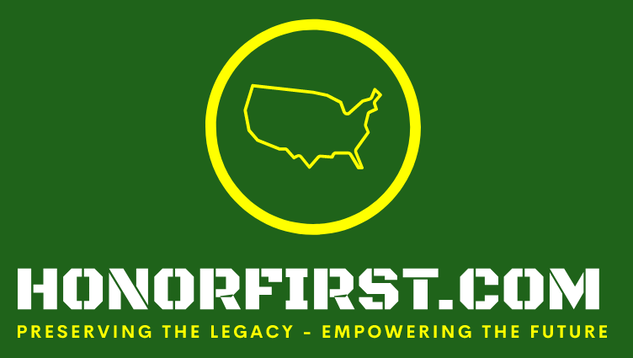

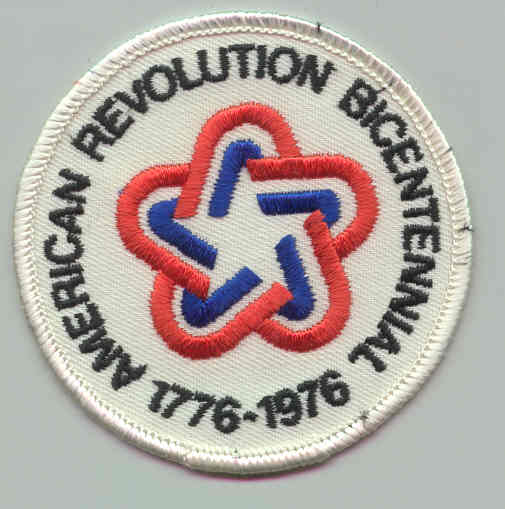
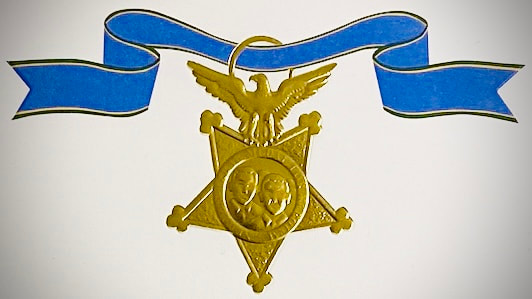
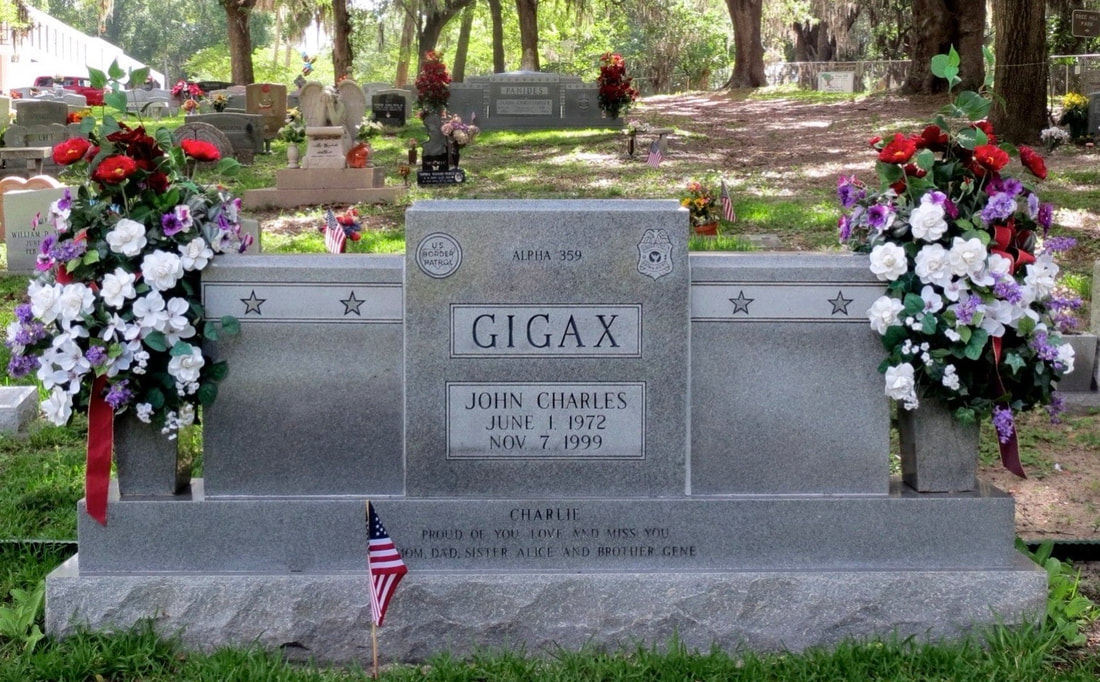





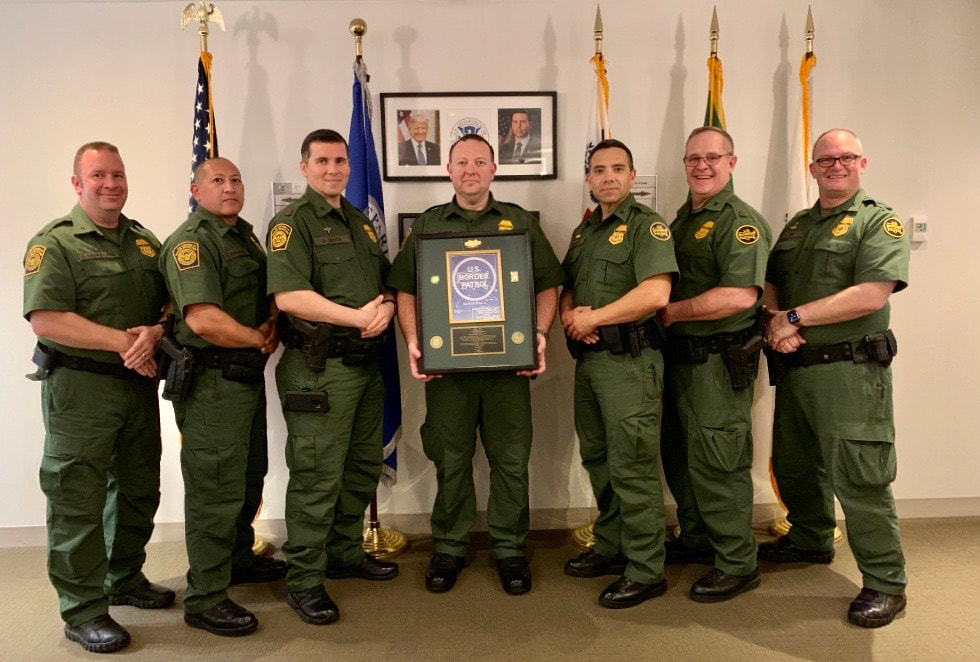
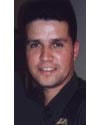
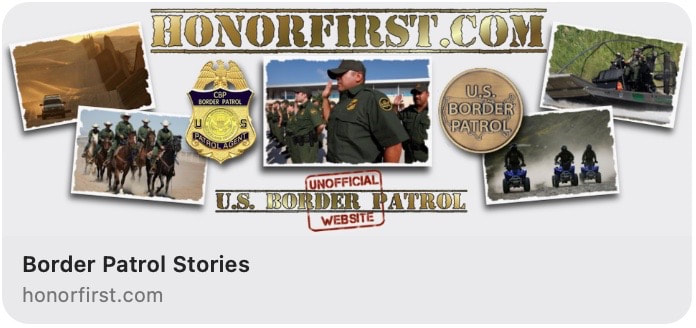
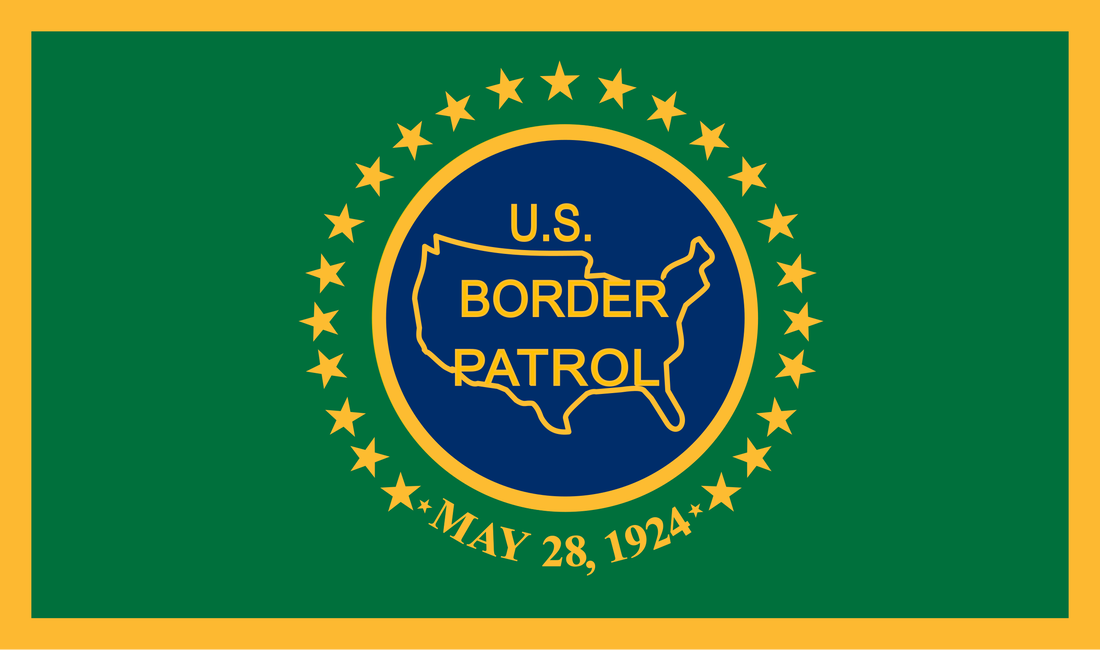
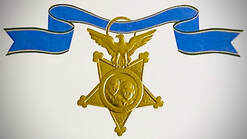
 RSS Feed
RSS Feed
